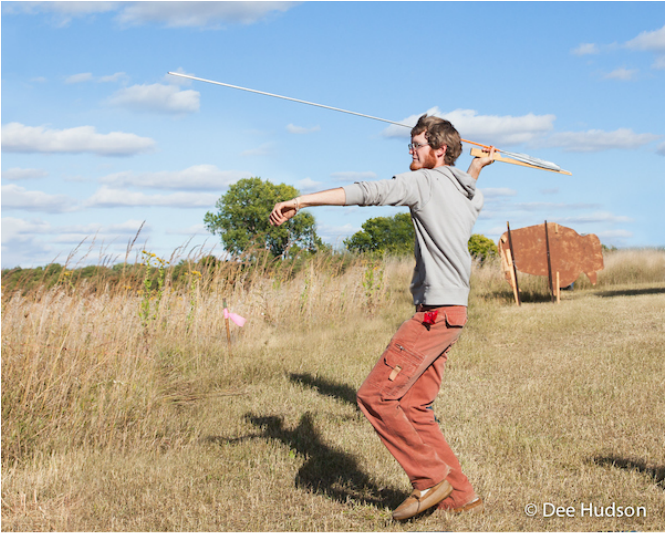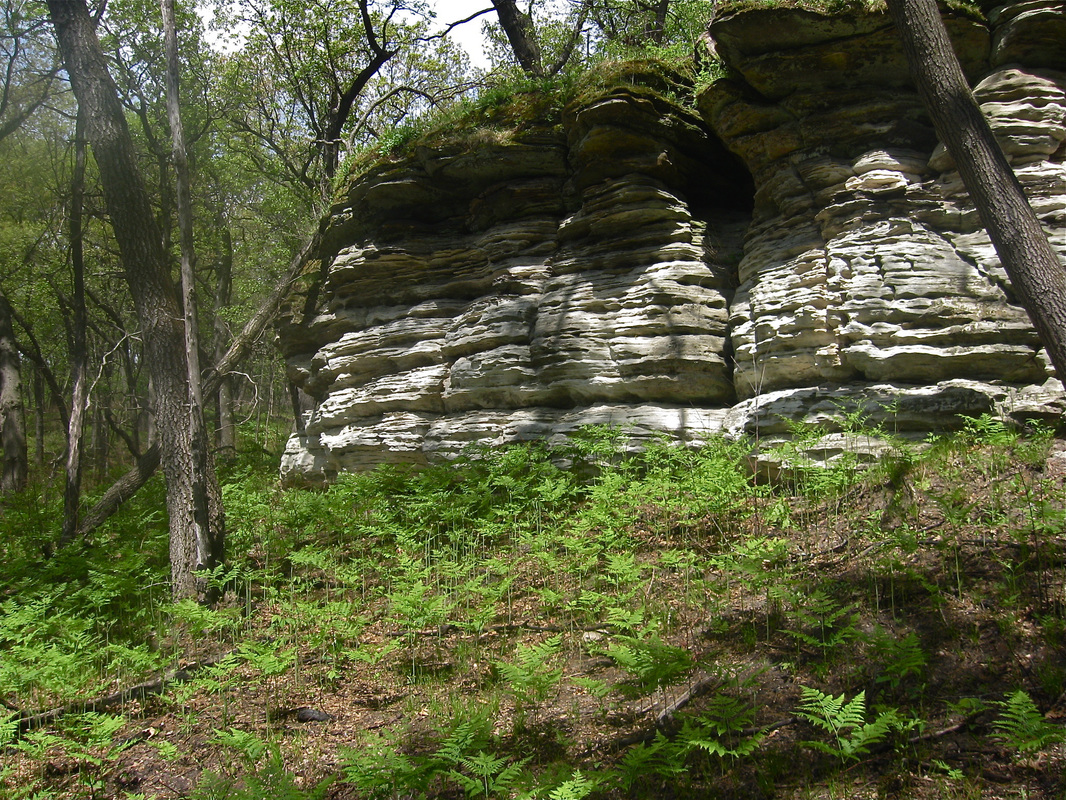|
Every year, on the 3rd Saturday in September, Nachusa Grasslands puts on the Autumn On The Prairie festival. This tradition started in 1988 with only a couple tents and a few dozen visitors. This year's festival boasted many vendors and attracted over 900 visitors. Walking and riding tours went out throughout the day and the site was filled with activities for all ages. Lunch was catered by Oliver's Corner Market. Bison tours, such as the one above, went out from the site all day. The herd put on a good show for one wagon load after another. Walking tours explored many areas of the preserve, including Tellabs Savanna (pictured above). Among the vendors this year were many local artists. From photography to beading, each displayed their unique style and inspiration from the prairie. One tent was devoted to painters. Several gorgeous landscapes, such as the one above, were painted on–site. (Above) A visitor tries the atlatl, an ancient spear–throwing technique, at Alan Harrison's tent where Native American skills were demonstrated. The welcome tent sold 290 t-shirts! Thank you to everyone who was involved with the festival, especially to all the volunteers who put in months of effort to make this event happen every year. We look forward to seeing you all next September! Today's author is Leah Kleiman.
4 Comments
The first time I experienced the bluffs, in what would become Nachusa Grasslands, was fifty years ago. My Boy Scout troop would camp in the woods. The bluffs were a good place to erect a tent and build a fire. Half a century later, these bluffs of my youth are found in the Tellabs Unit of Nachusa Grasslands. "It doesn't seem like we are in Illinois," is a common remark from visitors hiking below or on the bluffs. Four hundred fifty million years ago Illinois was located near the equator and covered by water. In these seas life was abundant. Trilobites, snails, clams, cephalopods and sponges inhabited the waters. As the climate cooled and glaciers formed, land began to emerge. On the shorelines, fine white sands composed largely of quartz accumulated. The sands were made pure by repeated washing in the surf. Shells and other potential fossils were ground up. These sands accumulated to depths of 100 feet or more. Over the last half billion years or so, waters have advanced and receded, glaciers have grown and melted, tectonic activity has moved land masses, and rock and soil have accumulated and eroded. Today the sands deposited during the Ordovician Period of the Paleozoic Era have been compacted, and uplifted as sandstone bluffs. St. Peters Sandstone, named for the St. Peters River in Minnesota, can be found in several areas in Nachusa Grasslands. St. Peters Sandstone is composed of small grains of quartz that are weakly cemented together. It erodes easily and is incorporated into sandy soils. The bluffs are beautiful and support unique plant communities. They form shelters and nesting locations for various animals. St. Peters Sandstone connects us with large and small events that have occurred over long, active periods of time. Oaks grow in soils abundant with sands that once were moved by jawless, armored fish. Nachusa Grasslands is known best for the restored prairie and bison. Before the bison and the grasses these areas were tilled and planted. On the hillsides beyond the reach of the plow, cattle grazed. Beneath the hooves dormant prairie seeds and roots were nestled in a soil rich in sand. And below the soil rose the bluffs of sandstone. Nachusa is a fertile and diverse place with its roots beneath an ancient sea. Come try the Stone Barn Savanna hike, touch and enjoy the sandstone. Text and Photography by Mark Jordan
|
Blog CoordinatorDee Hudson
I am a nature photographer, a freelance graphic designer, and steward at Nachusa's Thelma Carpenter Prairie. I have taken photos for Nachusa since 2012. EditorJames Higby
I have been a high school French teacher, registered piano technician, and librarian. In retirement I am a volunteer historian at Lee County Historical and Genealogical Society. Categories
All
Archives
January 2024
|
CONNECT WITH US |
|













 RSS Feed
RSS Feed